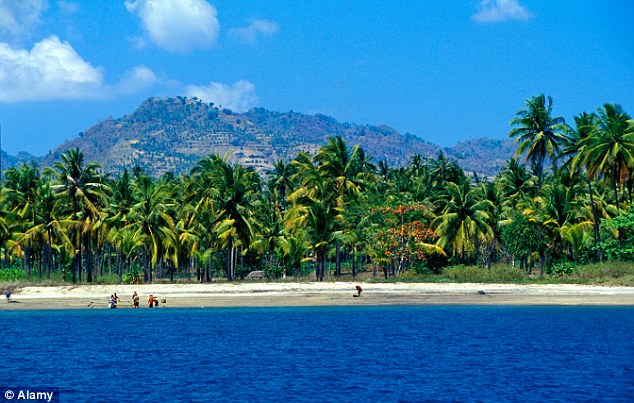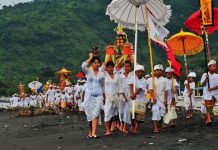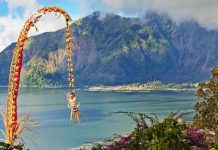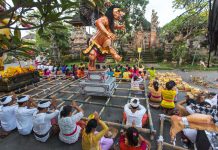By Mehru Jaffer
At numerous art exhibitions showing constantly in Jakarta, it is so easy to single out the unique works of Balinese painters. They tend to stand apart on any occasion whether the theme is contemporary, or traditional art. It maybe because they are from Bali, the last paradise on Earth.
And Nyoman Nuarta is no exception. It is perhaps the practice of Hinduism that is seeped so deep into the very soul of every Balinese that makes everything that most people from this island do, so different. Jim Supangkat is curator of Not I. Am I? He has put together an exhibition here of 14 Indonesian artists who have over the years concentrated on self portraits, with the big question mark as to who they might be, foremost on their mind. The importance of these artists lies in their effort to also try to put into context the reality of the I, with that of the collective, they.
According to the curator most reality is depicted mainly as a material concept while Nyoman’s art shows that the tangible is not the only reality he has experienced. The Balinese name for obvious reality is sekala but they also believe in niskala or what is real only in the virtual world. In the Balinese mind both these realities go to create countless other realities that exist around us in layers upon multiple layers.
Explaining the philosophy of sekala and niskala American author Fred B.Eisenman writes in his classic book of the same name that everything in Bali depends upon the three aspects of desa (place), kala (time) and patra (situation), and that truth is relative. There are as many answers simply because there are as many people asked.
Charmingly contradictory and immensely complicated, Bali is considered more of an experience rather than a mere place. Today Bali is at least 90 percent Hindu if not more. Yet it is a quaint kind of Hinduism that even the most broad minded Indian Brahmin may find most bewildering. That is because Hinduism has been only an addition to the native religion, a strong but superficial veneer of decorative Hindu practice over a deeply rooted animism, wrote Mexican artist Miguel Covarrubias in The Island of Bali way back in the1930s.
Indeed the root of Bali’s Hindu dharma is an intricate off shoot of beliefs as old as the oldest human being. Traced back to times when people’s fragile fate was threatened by many more forces beyond their control (demons), people created an entire family of protective spirits (gods) in the hope of gaining the goodwill of both and in an attempt to maintain equilibrium between the two opposing forces. The Chinese discovered Bali some 2,000 years ago and a sixth century Chinese Buddhist monk described the king here as one who is descendant of Hindu deities. Bali‘s initial animistic way of life was influenced by wandering Hindu priests, Mahayana Buddhism, orthodox Shivaism and other tantric practices as well. Over the centuries both religion and culture here has stayed most syncretic.
Although extremely ceremonial and obsessed with the concept of delivering the soul to the heavens what is most attractive about the Balinese is that they are a people rooted very much to the soil of this world. They seem to practice every thing they profess, are happy in their worship and not hysterical. Harmony is encouraged as theology is left entirely to the priests while ordinary people are free to pray to a favourite deity.
The emphasis is on being pleasant and life is lived as if it were a colourful fiesta instead of a trial full of guilt and shame. Religious ceremonies here are performed daily but they are not a frightening affair as entire communities participate, including visitors. No one is cast out as the unwanted other. The bad is never denied or condemned but just accepted while human beings are left to choose for themselves which path they want to follow in this life. The Balinese never attempt to conquer evil but simply to appease its fury in order to keep the scale of life, balanced. None is celebrated as the victor after any war and everything in life is considered sacred including dance.
The sacred dance Sanghyang is performed each time a community feels threatened by unseen dangers. The dancer’s role being to establish contact with the gods who descend down from the heavens and clear the atmosphere of negativity.
In fact unseen spirits are appeased and pampered all the time as homes and streets are cleaned and the first offerings of the day of rice and flower petals are placed in plates made from palm leaves every where on the island. The goodness of the grain is transported, it is said, symbolically to the heavens by the thick smoke of incense that permeates over all neighborhoods, even as the rice is ultimately consumed by street dogs.
That is why Bali is called the last paradise on earth. Perhaps because everyone here is made to feel as if they are God.





